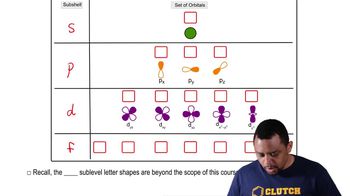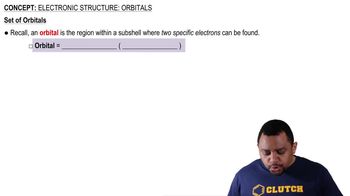Multiple Choice
An element possesses 4 energy levels. How many total electrons can it theoretically hold?
 Verified step by step guidance
Verified step by step guidance Verified video answer for a similar problem:
Verified video answer for a similar problem:



 0:46m
0:46mMaster Electronic Structure: Number of Electrons Concept 1 with a bite sized video explanation from Jules
Start learning